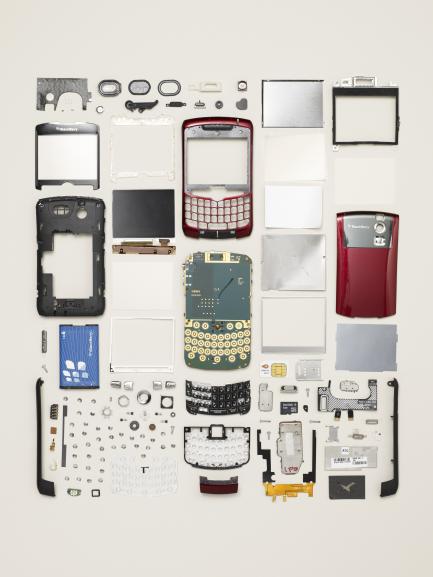Smithsonian Traveling Exhibition Explores What Is Inside Popular Everyday Devices
A quarter-inch-thick smartphone can be used as a watch, a camera, a theater, a map and even a mobile bank. “Things Come Apart,” a traveling exhibition circulated by the Smithsonian Institution Traveling Exhibition Service (SITES) and featuring the works of creative photographer and tinkerer Todd McLellan, looks inside the evolutions of the smartphone and dozens of other everyday technologies. The traveling exhibition will debut Sept. 3 at the Upcountry History Museum—Furman University, a Smithsonian Affiliate, in Greenville, S.C., and remain on view through Feb. 5, 2017, before continuing on a 12-city national tour.
Through more than 40 captivating photographs, videos and objects encased in acrylic, “Things Come Apart” displays the complex parts that have spurred revolutions in product design and functionality across multiple industries and the staying power of classic designs, from the ever-changing navigational systems to the evergreen bicycle. McLellan spent countless hours disassembling objects of all sizes and functions—from a watch to a laptop and a Walkman to an upright piano—with painstaking precision into hundreds or even thousands of pieces. With each object fully stripped to its bare parts, he methodically worked backwards, laying out each item in reverse order from the protective case to the smallest circuits until the true scope of each design was captured. The resulting images, grouped alongside other items built for similar purposes, provide a visual history lesson of mechanical innovation and highlight the contrast between old-world craftsmanship and sleek modern engineering.
Technological advances have increased with exponential speed since the second half of the 20th century. Consumers have demanded that their gadgets be increasingly capable and reliable while also being sleeker and more portable. The resulting devices are smaller and more complex than ever before while having the life cycle of a fruit fly.
“We don’t always think about the tools we use, but working on this project has given me a greater respect for engineering of newer technology,” said McLellan, who also disassembled bicycles, compasses and power drills, among other things. “It’s remarkable how much modern design packs into so little.”
Younger visitors to the exhibition will also have the opportunity to become part of the experience through the Smithsonian’s Lemelson Center’s Spark!Lab activities. These collaborative, hands-on challenges offer hypothetical situations that allow critical thinking and team creativity to flourish and provide fun skill building in STEM (science, technology, engineering and math). The Spark!Lab activity kits are provided through a grant from the Smithsonian Women’s Committee.
SITES has been sharing the wealth of Smithsonian collections and research programs with millions of people outside Washington, D.C., for 65 years. SITES connects Americans to their shared cultural heritage through a wide range of exhibitions about art, science and history, which are shown wherever people live, work and play. Exhibition descriptions and tour schedules are available at www.sites.si.edu.
McLellan is a photographer who specializes in conceptual work. He nurtured his love for conceptual photography at the Alberta College of Art and Design, where he received his Bachelor of Fine Arts in 2002. He released the book Things Come Apart in 2013 and continues to make inspired visuals in his Toronto studio and on location which can be seen at http://www.toddmclellan.com/.
# # #
SI-87-2016



